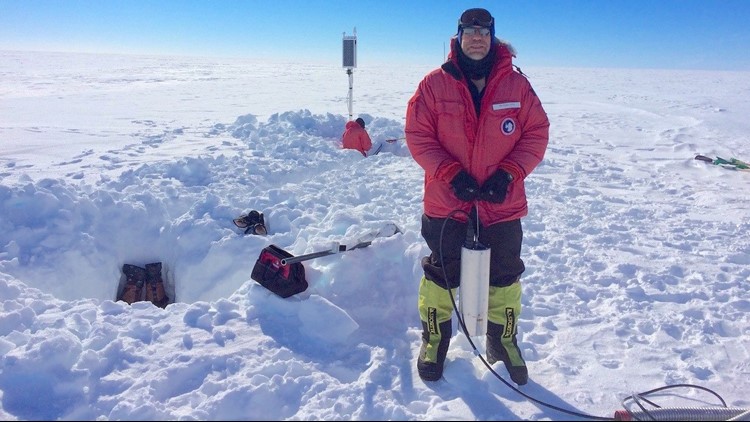
“Antarctica is the closest thing you can come to visiting another planet without leaving the earth,” said Dr. Richard Aster, a geophysicist with Colorado State University.
The icy region of the south pole is often called the most desolate place on earth. Harsh weather can shut down research operations for weeks at a time, but Dr. Aster and a team of scientists spent two years there from 2015 to 2016, measuring and listening to vibrations in sea ice.
“Sounds a bit like a didgeridoo. It’s got a very interesting tone to it,” said Dr. Aster.
The sound is not alien, its planetary. It is trapped seismic waves vibrating across the world’s largest expanse of floating ice.
The Ross Ice Shelf, in Antarctica, is pancake flat, and the size of Texas.
Dr. Aster and his team of scientists deployed the worlds largest network of seismometers in the snow dunes and in the compacted layers of snow called firn on the Ross Ice Shelf.
“We view this as a way to really listen to the voice of the ice shelf, and understand how it might be changing in time periods of minutes to years,” said Dr. Aster.
Aster said that polar sea ice governs the weather and even the climate of the planet, and he’s concerned about global sea rise if this ice is allowed to melt.
Ninety percent of the earth’s ice is locked away in the glaciers of Antarctica.
“Ice shelves are the cork in the bottle that helps hold back some of these glaciers. So we care a lot about their health, and this is one way to monitor them,” said Dr. Aster.
While listening to the soundtrack of these ice vibrations, Aster and his team made an important discovery.
“What we believe is happening is that storms, and particular warm periods that slightly melt the surface of the ice shelf, change these tones very noticeably,” said Dr. Aster.
That means there is now a record of change within these icy tones.
“The stability of ice shelves is a very important problem, and if this new methodology can help us to better monitor their health and evolution, then it’s a valuable contribution,” said Aster.
Dr. Astor co-authored a research paper with Dr. Julian Chaput that was published on Tuesday. CSU’s Dan McGrath and Michael Baker contributed to the research.

